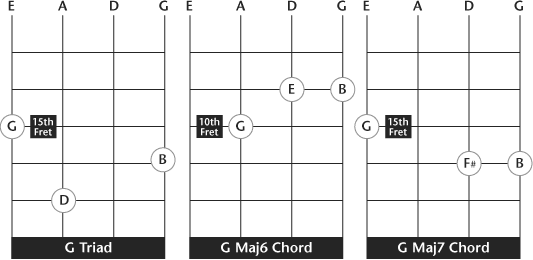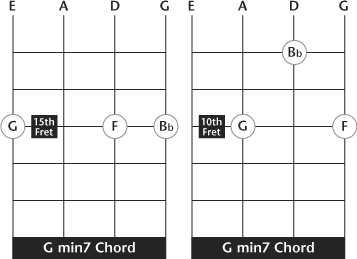| Online Bass Instruction with Rusty Springfield | ||
 |
||
|
Home | eMail | Articles | Audio Clips | Bass Gallery
Great Bass Tales | Photo Archive | Links | Lessons |
||
| Bass Chords |
The trick is to place the chord tones in the proper octaves so that they don't sound like they're in the "mud zone." Just about any chord can be represented by using only the three most identifying notes. In most cases, these would be the root, third and seventh. The fifth is not really important unless it's been altered as in a "flat five" chord.
The following diagrams can help get you started in your chord explorations. These voicings are basic. There are many variations, and as always, I encourage you to experiment with as many different chord types and voicings as you can think up.
- Remember that harmonics can be mixed in with fretted notes to create rich chord textures and dense harmonies.
- You can play the root with your left hand while your right hand plays two or three chord tones up past the twelfth fret.
- As a variation of the above, try walking a bass line with your left hand while playing the third and seventh intervals with your right hand in a rhythmic pattern. This technique also works nicely with a Latin feel.
| Go to the next lesson: Harmonics |


